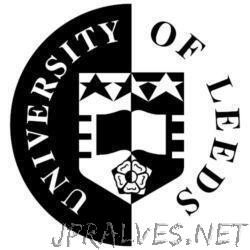Other

“Automated vehicles could be made more pedestrian-friendly thanks to new research which could help predict when people will cross the road. Leeds scientists investigating how to better understand human behaviour in traffic say that neuroscientific theories of how the brain …

“A new synthetic material that accelerates the removal of harmful nitrogen oxides and carbon monoxide from engine fumes is to be tested in a prototype catalytic converter. Scientists at Leeds who developed the material have announced a research collaboration with …

“Engineers have developed a material that mimics human cartilage – the body’s shock absorbing and lubrication system, and it could herald the development of a new generation of lightweight bearings. Cartilage is a soft fibrous tissue found around joints which …

“Scientists have created synthetic soft surfaces with tongue-like textures for the first time using 3D printing. This opens new possibilities for testing oral processing properties of food, nutritional technologies, pharmaceutics and dry mouth therapies. UK scientists led by the University …

“An artificial intelligence system analysing data from the Gaia space telescope has identified more than 2,000 large protostars - and they could hold clues to the origins of the stars in the Milky Way. Protostars are young stars that are …

“cientists have made a breakthrough in the development of a new generation of electronics that will require less power and generate less heat. It involves exploiting the complex quantum properties of electrons – in this case, the spin state of electrons …

“Scientists have made a breakthrough in the search for a new, sustainable permanent magnet. Most permanent magnets are made from alloys of rare earth metals - but the mining and processing of these materials produces toxic by-products, leading to ecological challenges …

“Practise makes perfect – it is an adage that has helped humans become highly dexterous, and now it is an approach that is being applied to robots. Computer scientists at the University are using the artificial intelligence (AI) techniques of automated …

“cientists at the University of Leeds have created a new form of gold which is just two atoms thick – the thinnest unsupported gold ever created. The researchers measured the thickness of the gold to be 0.47 nanometres – one million …

“asers are widely used as high power sources of light operating at a specific frequency. But how does this frequency get selected when a laser is turned on, and how quickly? Pioneering engineers using terahertz frequency technology have been able …

“New research gives insight into a recent experiment that was able to manipulate an unprecedented number of atoms through a quantum simulator. A recent experiment by Harvard University and MIT developed a specialized quantum computer, known as a quantum simulator …

